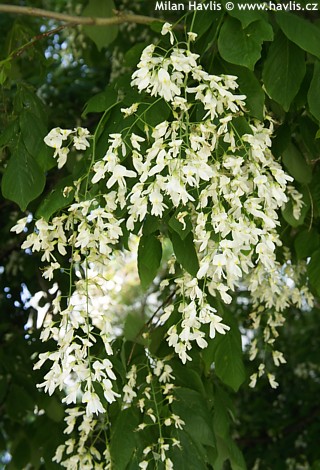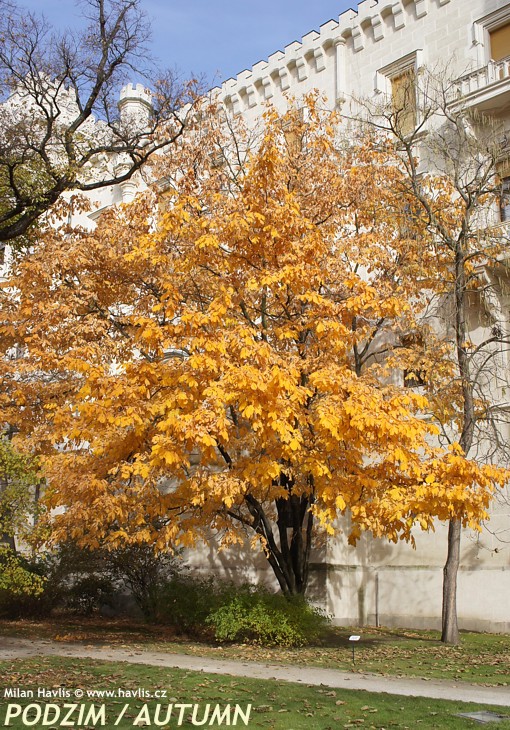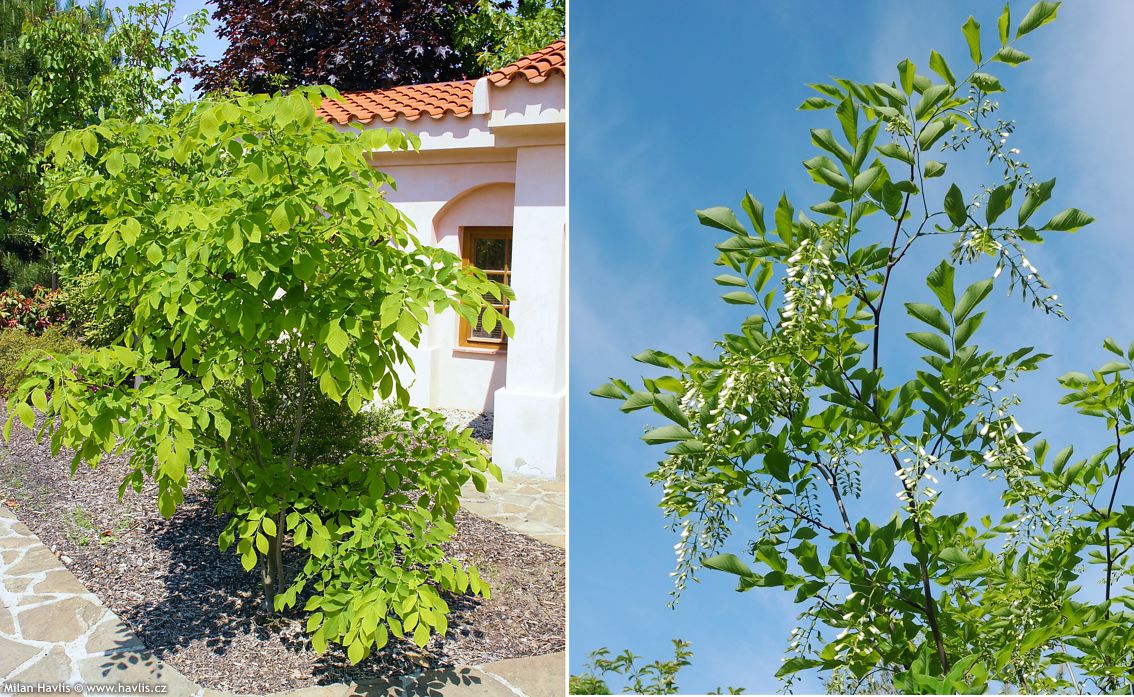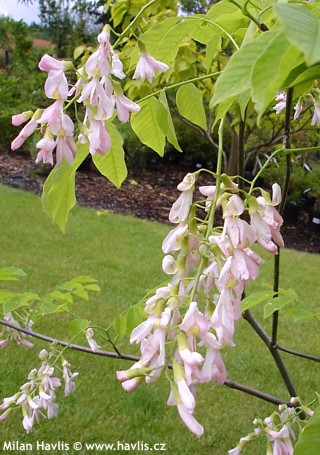Cladrastis kentukea (c.lutea) yellow wood


Looking at the leaves and flowers one can easily mistake it for a special variety of locust. In fact, it is a genus of its own. This elegant tree gets rather wide than tall, and calls for solitaire planting. The flowers are 30-40 cm long racemes of pure white, beautifully scented, pea-like flowers that strongly resemble wisteria. They come out in early summer. Leaves are pinnate, compound of 7-9 ovate or obovate fresh green leaflets that change to honey-yellow in autumn.
Just one thing may be a bit of a nuisance – it often flowers every other year or so as it has to gather enough strength to set flowers. Or maybe it is just pig-headed. No worries! The tree looks gorgeous, exotic, and attractive even with leaves only. We do suggest you to have one if you are looking for something extraordinary but low-maintenance at the same time.
Yellow wood likes deep, fertile, moist but well-drained soil. Having said that we should be frank enough to mention that it usually gets used to almost any site. Its Latin name comes from Greek klado (branch) and thraustos (fragile). So you needn’t have a college degree in agriculture to understand that it wouldn’t live happily on a top of such a hill that inspired Emily Bronte to write a book called Wuthering Heights. Fully hardy to -30°C (USDA zone 5) or possibly more.
Last update 17-07-2008
Goods are shipped all over Europe. For Russia and U.K. and for further details please read about SHIPPING OPTIONS HERE.
Are you interested in a serious discount for orders NOV-FEB? Check your options here.
THE PRICES INCLUDE VAT of 15%. For quick conversion you can use 1 CZK = approx. 0.04 EUR
- STANDARD QUALITY - Plants of this group are 1st class quality with number of branches and overall density adequate to their size and age, considering they were container grown.
- DE LUXE QUALITY - This label guarantees a luxurious quality of manually selected plants that, compared to their height and age, are exceptionally dense and beautiful.
- EXTRA - These plants are usually mature and bigger specimens with exceptional overall appearance.
- STANDARD (as described in the plant form) means a tree with a trunk of 190-210 cm and a crown at the top, unless specified differently. The commercial size for trees is their girth measured in the height of 1m from ground.
- HOBBY - These plants are of the same quality as our standard-quality plants but younger and therefore cheaper.
- SHRUB - a woody plant with branches growing bushy from the ground level.
- HALF-STANDARD or MINI-STANDARD - a small tree with shorter trunk, its size is usually specified.
- FEATHERED - These are trees with branches growing already from the base of the trunk and up along the stem.
- GRASSES and PERENNIALS - Sizes given usually read the diameter of the pot or the clump, as specified.


















